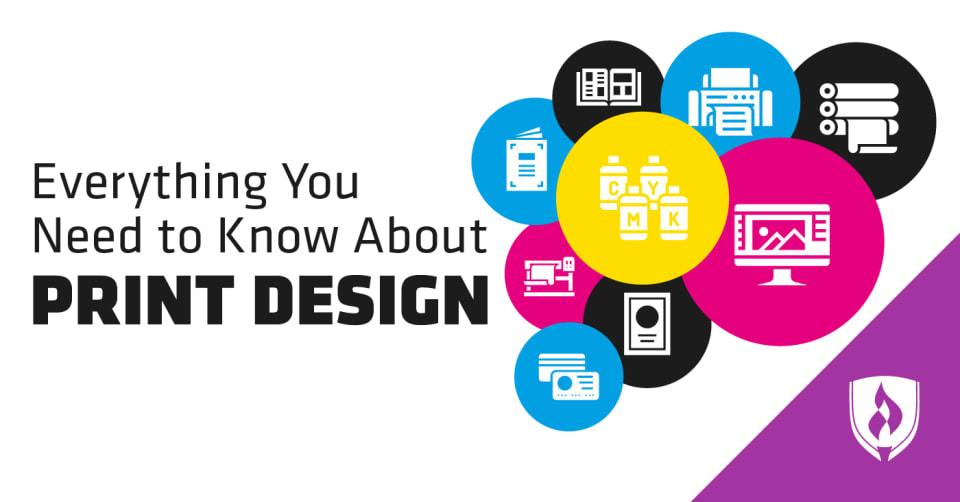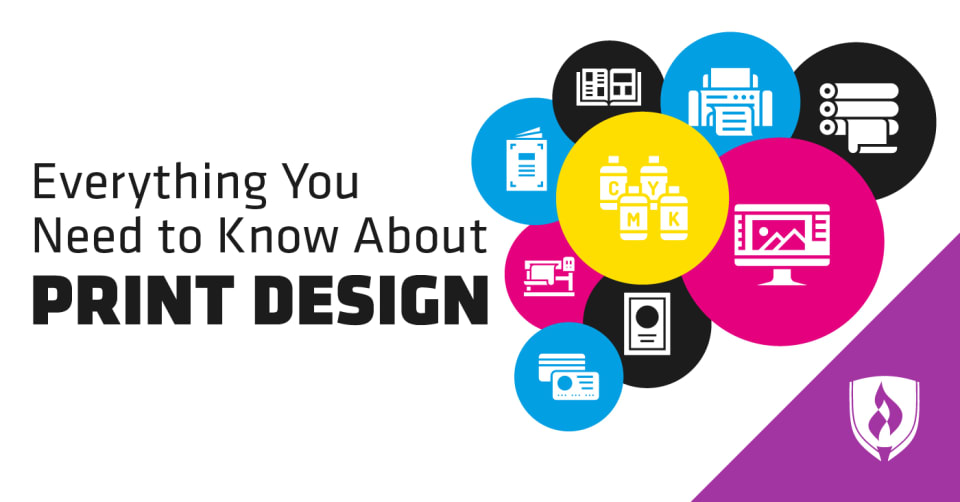The Art of Print Design: Creating Visual Masterpieces
In an increasingly digital world, where screens dominate our daily lives, there’s something undeniably magical about the tangible allure of print design. The feel of crisp paper between your fingers, the vibrant colors that pop off the page, and the elegance of a well-designed layout – these are the elements that make print design a timeless art form. In this blog, we’ll embark on a journey into the captivating world of print design, exploring its history, principles, and secrets to crafting visually stunning masterpieces.

A Brief History of Print Design
Print design has been an integral part of human communication for centuries, dating back to the invention of the printing press by Johannes Gutenberg in the 15th century. This revolutionary invention enabled the mass production of books and other printed materials, transforming the way information was disseminated.
During the Renaissance period, print design reached new heights with the creation of intricate illuminated manuscripts adorned with ornate typography and illustrations. This era marked the birth of typography as an art form in its own right, setting the stage for centuries of creative exploration.
In the 20th century, print design underwent a series of significant transformations. The Art Nouveau movement introduced flowing, organic shapes and decorative elements into the design, while the Bauhaus movement emphasized simplicity, geometry, and functionality. These contrasting styles paved the way for the diverse range of design approaches we see today.
The Principles of Printing Design
Print design is not just about throwing images and text onto a page; it’s a meticulously crafted art that adheres to fundamental principles. Here are some key principles that guide print designers:
Typography for Printing Design
Typography is the cornerstone of print design. Choosing the right typefaces, font sizes, and line spacing can greatly impact the readability and visual appeal of a design. Whether it’s a classic serif font or a modern sans-serif typeface, typography sets the tone for the entire piece.
Color Theory print design
Colors evoke emotions and convey messages. Print designers must have a deep understanding of color theory to create harmonious and impactful designs. The choice of colors should align with the brand’s identity and the intended message of the design.
Layout and Composition
How elements are arranged on a page is crucial to the overall design. A well-balanced composition guides the viewer’s eye and ensures that information is presented clearly and engagingly. Grid systems and visual hierarchy are essential tools in layout design.
Imagery and Graphics
The selection and use of images and graphics play a vital role in print design. High-quality visuals can enhance the message and aesthetics of a design. Whether it’s photographs, illustrations, or custom graphics, they should be integrated seamlessly into the layout.
Whitespace
White space, or negative space, is the area of a design left intentionally blank. It’s not wasted space but rather a crucial element in creating a clean, uncluttered, and visually pleasing design. White space helps to focus the viewer’s attention on key elements.
Must Read About Plan Your Project with Your Software
Consistency
Maintaining consistency in design elements such as fonts, colors, and spacing is essential for brand identity and visual cohesion. Consistency ensures that a design feels unified and professional.
Crafting a Visual Masterpiece print design
Now that we’ve explored the principles of print design, let’s dive into the process of creating a visual masterpiece.
Understand the Purpose
Before diving into design, it’s essential to understand the purpose of the print material. Is it a brochure, poster, magazine layout, or packaging? Who is the target audience, and what message needs to be conveyed? Understanding the context and goals is the first step in creating an effective design.
Research and Inspiration
Designers often draw inspiration from various sources, such as art, nature, or current design trends. Researching the competition and staying up-to-date with design trends can provide valuable insights.
Sketch and Ideate poster design
Start with rough sketches and brainstorming sessions. Explore different layout ideas, typography choices, and color schemes. This phase allows you to experiment and refine your concepts before moving to the computer.
Digital Design prints
Once you have a clear vision, bring your ideas to life using graphic design software. Pay close attention to typography, spacing, and color choices. Use grids and guides to maintain consistency in your layout.
Test and Iterate
Before finalizing your design, it’s essential to test it in various formats and sizes to ensure it looks great in print. Make adjustments as needed based on feedback and testing results.
Print with Precision
When it’s time to print, work with a professional printing service that can ensure the highest quality output. Pay attention to print specifications, such as resolution, color profiles, and paper type.
Evaluate and Learn
After the print run, take the time to evaluate the final product. Does it meet the design objectives? Were there any unexpected issues in the printing process? Learning from each project helps you refine your skills and become a better print designer.
Conclusion print design
Print design is a captivating art form that combines creativity, craftsmanship, and technical expertise. It’s a realm where every detail matters, from the choice of fonts to the arrangement of images and the selection of colors. As we’ve explored in this blog, the principles of typography, color theory, layout, and consistency are the building blocks of print design.
In a world saturated with digital media, the tangible beauty of a well-designed print piece continues to captivate and inspire. So whether you’re a seasoned print designer or someone just beginning to explore this enchanting world, remember that print design is about creating visual masterpieces that leave a lasting impression on the senses and the soul.






